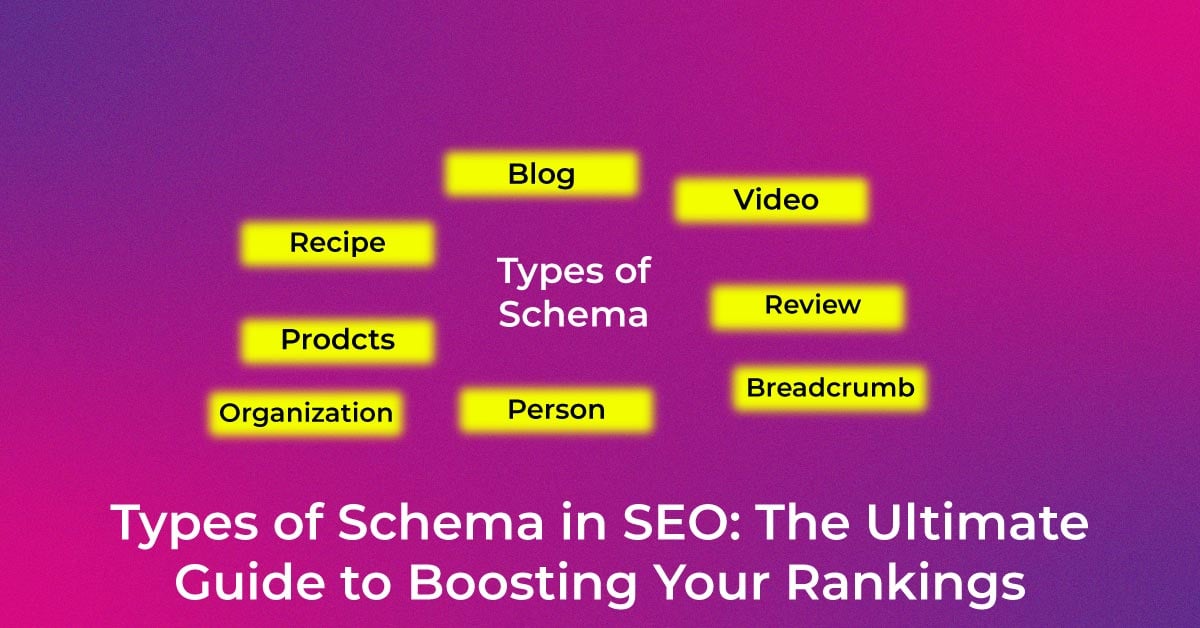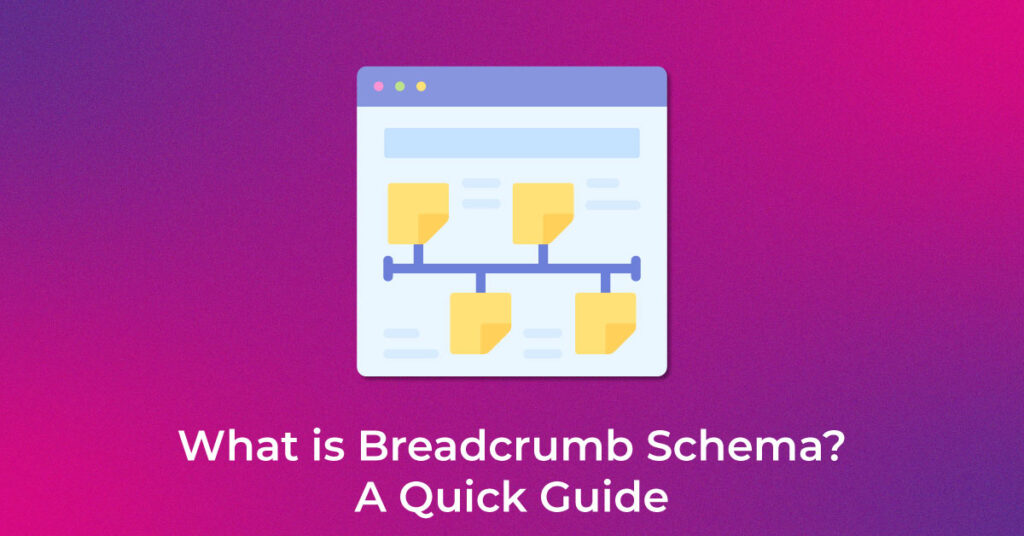What is Breadcrumb Schema Markup?
Breadcrumb Schema Markup is a structured data markup that helps search engines understand and display a website’s breadcrumb navigation in search results. It provides a hierarchical path, showing users where a page sits within the site’s structure.
For example, instead of a long URL, search results may display:
Home > Blog > SEO Tips > What is Breadcrumb Schema Markup
This markup improves user experience by offering clear navigation and helps search engines better index content. By implementing Breadcrumb Schema Markup, websites can enhance their SEO, improve click-through rates (CTR), and make navigation more intuitive, especially on mobile devices.
Why is Breadcrumb Schema Markup Important for SEO?
Breadcrumb Schema Markup enhances SEO by improving site structure, making it easier for search engines to understand content hierarchy. This structured data helps search engines index pages more efficiently, leading to better rankings.
Additionally, breadcrumbs appear in search results, replacing long URLs with a clean, navigational path. This improves click-through rates (CTR) by making search snippets more user-friendly.
Breadcrumbs also reduce bounce rates by providing clear navigation, encouraging users to explore more pages instead of exiting. For mobile users, they offer a compact and accessible navigation tool, enhancing usability and engagement.
By implementing Breadcrumb Schema, websites improve crawlability, user experience, and search visibility, contributing to overall SEO success.
Types of Breadcrumbs
Hierarchy-Based Breadcrumbs
Hierarchy-based breadcrumbs reflect the structure and depth of your website. They offer a pathway from the homepage right down to the specific page the user is on, allowing for easy navigation backwards through various levels of content. For instance, you might see something like this: Home > Category > Sub-category > Product. This indicates each step classifies the next, giving users a clear sense of their location within the domain of your site. Hierarchy-based breadcrumbs are particularly useful for e-commerce or content-rich websites where the depth of navigation can be considerable. Consider adding
Attribute-Based Breadcrumbs
Attribute-based breadcrumbs generate a dynamic trail based on different filters users may apply on a page, providing a clear and convenient way to track and modify their chosen attributes. Typically found on e-commerce sites, they complement hierarchy-based breadcrumbs by reflecting users’ unique choices rather than the website’s page structure.
For example, on an online fashion store, when a user filters for “Men’s Clothing,” “Pants,” “Size: Medium,” “Color: Black,” the breadcrumb trail might look like: Home > Men’s Clothing > Pants > Size: Medium > Color: Black. Each breadcrumb represents an attribute the user has selected, allowing them to easily remove filters one by one if they wish to broaden their search.
Path-Based Breadcrumbs
Path-based breadcrumbs, also known as history-based breadcrumbs, display the sequence of pages a user has visited to reach their current location. Unlike hierarchy-based breadcrumbs, which follow the site’s structure, path-based breadcrumbs adapt dynamically based on the user’s journey.
For example, if a user navigates from Home → Blog → Category → Article, the breadcrumb trail will reflect this exact path. However, if they take a different route, such as Home → Services → Blog → Article, the breadcrumb will adjust accordingly.
While this type can help retrace steps, it may sometimes create inconsistent trails, especially if users take multiple routes to the same page. Due to this, path-based breadcrumbs are less commonly used in modern web design, as they can be confusing and unpredictable for users.
Benefits of Implementing Breadcrumb Schema
Improved User Experience
Breadcrumb Schema enhances navigation by providing users with a clear path to follow, making it easier to explore related content or backtrack effortlessly. This intuitive design reduces frustration and keeps users engaged longer. For mobile users, breadcrumbs streamline navigation, replacing bulky menus with a compact, user-friendly alternative. Well-designed breadcrumbs improve accessibility, ensuring a seamless browsing experience across all devices.
Enhanced SEO
Breadcrumb Schema Markupstrengthens site structure, helping search engines better understand content hierarchy for improved indexing. It also enhances search results by displaying navigational links, increasing click-through rates (CTR) and user engagement. By integrating breadcrumbs, you make it easier for both users and search engines to navigate your site, boosting visibility and SEO performance.
Reduces Bounce Rate
Breadcrumb Markup helps users quickly understand their location within a website, making navigation easier and more intuitive. When visitors can find their way effortlessly, they are more likely to explore additional pages rather than leave immediately. This reduces bounce rates and increases user engagement, signaling to search engines that your website offers valuable content.
Better Findability & Navigation
Breadcrumbs enhance site navigation by providing a structured path that allows users to backtrack easily. They improve internal linking, helping both visitors and search engine crawlers access important pages with minimal effort. This boosts indexing efficiency, making your site more discoverable in search results and improving overall SEO performance.
Mobile Usability Benefits
With mobile-first indexing, Google prioritizes mobile-friendly websites, and breadcrumbs play a crucial role in enhancing mobile navigation. They take up less screen space than traditional menus, ensuring a clutter-free, user-friendly experience. This makes browsing more seamless on smaller screens, leading to higher engagement and lower abandonment rates.
How to Implement Breadcrumb Schema using Infidigit Breadcrumb Schema Markup Tool (With Example)
1. Defining BreadcrumbList and ListItems
To implement Breadcrumb markup, your website must include structured data that follows Schema.org guidelines. This begins with defining a BreadcrumbList, an ItemList type that outlines the sequence of pages a user follows to reach the current page.
Each BreadcrumbList consists of multiple ListItem elements, where every step in the navigation trail includes:
- Position – The order of the breadcrumbs in the hierarchy.
- Name – The label displayed for the breadcrumb.
- Item – The canonical URL pointing to the respective page.
Instead of manually coding the schema, you can simplify the process using the Infidigit Breadcrumb Schema Generator Tool. This tool automatically generates structured data that meets SEO best practices.
Here’s a breadcrumb schema example:
{
“@context”: “https://schema.org”,
“@type”: “BreadcrumbList”,
“itemListElement”: [
{
“@type”: “ListItem”,
“position”: 1,
“name”: “Home”,
“item”: “https://www.yourwebsite.com/”
},
{
“@type”: “ListItem”,
“position”: 2,
“name”: “Blog”,
“item”: “https://www.yourwebsite.com/blog/”
},
{
“@type”: “ListItem”,
“position”: 3,
“name”: “Category”,
“item”: “https://www.yourwebsite.com/blog/category/”
}
]
}
The final breadcrumb, representing the current page, should not include an ‘item’ property, as linking to the current page is unnecessary.
2. Specifying Each Breadcrumb with a ListItem
For every page in the breadcrumb trail, you need to define a ListItem that specifies:
- Position – The numeric order in the trail (e.g., ‘1’ for the homepage).
- Name – The breadcrumb label displayed to users.
- Item – The URL of the linked page (except for the current page).
When manually coding, this process can be time-consuming. However, using the Infidigit Breadcrumb Schema Generator, you can auto-generate schema markup in seconds and avoid common errors.
By structuring breadcrumbs properly, search engines can interpret them correctly, leading to rich snippets in search results, better navigation, and improved SEO performance.
3. Using an ID to Specify the URL
To make your Breadcrumb Schema more structured and maintainable, you can use an @id property to specify URLs uniquely. This method is especially useful when the same URL appears in multiple structured data elements.
Here’s a breadcrumb schema example using JSON-LD with @id:
{
“@context”: “https://schema.org”,
“@type”: “BreadcrumbList”,
“itemListElement”: [
{
“@type”: “ListItem”,
“position”: 1,
“name”: “Home”,
“item”: “https://www.yourwebsite.com/”
},
{
“@type”: “ListItem”,
“position”: 2,
“name”: “Blog”,
“item”: “https://www.yourwebsite.com/blog/”
}
]
}
Using @id ensures consistency across your schema and simplifies management. The Infidigit Breadcrumb Schema Generator automatically structures breadcrumbs with unique @id references, making your implementation error-free and SEO-friendly.
Where to Place Breadcrumb Schema?
To ensure search engines properly recognize and display breadcrumb navigation, Breadcrumb markup should be placed in the <head> or <body> section of your website’s HTML. It is typically added to:
- The Header Section – Embedding it site-wide ensures breadcrumbs appear consistently across relevant pages.
- Before the Closing </body> Tag – Placing it at the end of the HTML document helps search engines read structured data efficiently.
- Within JSON-LD Script Tags – Google recommends using JSON-LD format for better compatibility and ease of implementation.
Once added, validate your schema using Google’s Rich Results Test to confirm proper implementation and visibility in search results.
Best Practices for Implementing Breadcrumb Schema
1. Analyze and potentially adjust your website’s hierarchy for better navigation.
Before diving into the implementation of the breadcrumb schema, take the time to analyze your website’s hierarchy carefully. Consider how pages are currently structured and linked to one another. Does it reflect the most logical path for users navigating your website? Analyzing and adjusting your site’s hierarchy is pivotal in creating a logical path that enhances both user experience and SEO.
If you find pages that are isolated or content that is too deeply buried, restructuring may be necessary to make information more accessible. This could mean rethinking your navigation menus, consolidating pages under appropriate categories, or simply ensuring that every page has a clear and relevant parent page. Such adjustments not only lay the groundwork for effective breadcrumbs but also help visitors and search engines alike to understand and navigate your content efficiently.
In instances where you discover orphan pages—those without any incoming links—you’ll need to decide whether to integrate them into your structure or remove them if they’re no longer relevant. Keep in mind that a well-organized website hierarchy should enable users to reach any page within a few clicks from the home page.
2. Maintain consistency in design and placement across your entire website.
Consistency in the design and placement of your breadcrumbs is key to providing a cohesive navigational experience across your website. Make sure that the breadcrumbs have a uniform look and feel on every page where they appear. This involves using the same style, format, and font, and placing them in a consistent location, such as immediately below the navigation bar or at the top of the content area.
A uniform design helps users quickly recognize and understand how to use breadcrumbs to navigate your website. Each breadcrumb should be easily distinguishable, with visual cues such as color, size, or icons to denote the hierarchy. Consistent placement makes it second nature for users to find and utilize the breadcrumb trail as they move from page to page.
Implementing a standardized design and placement not only reinforces the navigational framework of your site but also contributes to its visual identity. This could translate to improved user satisfaction and reduced bounce rates as users become more comfortable and familiar with navigating your site.
3. Use clear and concise labels that are easy for users to understand.
One of the core principles for an effective breadcrumb schema is the use of clear and concise labels. Each breadcrumb should represent the content of its linked page accurately and succinctly. Avoid using technical jargon, ambiguous terms, or page IDs that could confuse users. Instead, opt for language that is easily understood and reflects common terms your audience may search.
For example, instead of “Product ID 12345,” use the label that describes the product, e.g., “Women’s Running Shoes,” to give immediate clarity. Also, strive to keep labels short to ensure they do not get truncated in search results or on small screens, potentially losing their informative value.
In practice, clear labeling helps users navigate your site more intuitively, reducing the cognitive load and enhancing their overall experience on your website. Concise, meaningful labels also contribute to better indexing by search engines, which can infer content hierarchy and relevance more accurately.
4. Ensure brevity to avoid truncation in search results.
Brevity within your breadcrumb labels is not just about aesthetics; it is a functional necessity. In search results, lengthy breadcrumb trails are often truncated, which can obscure important information and lead to missed clicks. Strive to encapsulate each breadcrumb’s essence in the fewest possible words while maintaining meaning and clarity.
As a general rule, aim for lingo that your audience readily understands and presence of mind that space is at a premium, especially on mobile devices. For example, instead of “Latest Collection of Winter Jackets for Men,” a concise alternative would be “Men’s Winter Jackets.” This shortened label achieves the same communication goal without the risk of getting cut off in search results.
When creating breadcrumbs with SEO in mind, remember that while keywords are important, user comprehensibility should always take precedence. By ensuring brevity in your breadcrumb trails, you improve both the user experience and your content’s visibility in search engines.
5. Position breadcrumbs strategically for visibility.
Implementing breadcrumbs is not only about providing a helpful navigation tool but also making sure that it is placed where users expect and need it to be. Position your breadcrumbs strategically at the top of the page, below the primary navigation bar, and ideally above the main content or page title. This placement makes it one of the first elements seen on the page, reinforcing user orientation from the moment they land on the content.
The position shouldn’t be too prominent to overshadow the main navigation or the page’s primary content but should be visible to be noticed without the need for scrolling. This balance ensures that breadcrumbs serve as a subtle, yet effective guide through your website’s structure.
For mobile layouts, optimization is crucial to maintain visibility and functionality. Given the limited screen space, consider compact designs that preserve the trail’s integrity without overwhelming the interface.
6. Verify schema alignment with displayed breadcrumbs
When incorporating breadcrumb schema into your website, the schema must align perfectly with the breadcrumb trail displayed to users. There should be no discrepancy between the structured data you provide to search engines and the visual breadcrumbs on your webpage. Any misalignment could confuse users, diminish the user experience, and potentially harm your SEO as search engines might not fully understand your site’s structure.
To maintain this alignment, routinely verify that your breadcrumb schema markup matches the sequence and labels of your site’s breadcrumb trail. Check each ListItem in the schema, and ensure it corresponds to the displayed links, both in ordering and in naming. This makes it easier for search engines to display your breadcrumb paths accurately in search results, providing extra context and potentially increasing click-through rates.
7. Don’t link the last item to the current page.
It is a crucial part of best practices for breadcrumbs to avoid linking the last item in the breadcrumb trail to the page the user is currently on. Having a clickable link that reloads the same page is redundant and can create frustration for users, as it serves no practical purpose in enhancing navigation. Additionally, it can confuse search engines when crawling and indexing your website, potentially negatively impacting your SEARCH ENGINE OPTIMIZATION(SEO).
Instead, consider boldfacing the last item or using a different typographical emphasis to denote it as the current page. This provides a visual distinction that helps users understand their location within the site without tempting them to click unnecessarily.
As part of your implementation checklist, ensure that your breadcrumb schema reflects this principle by omitting the ‘item’ property for the last ListItem. This aligns with structured data guidelines and improves the accuracy of breadcrumb trails shown in search results.
8. Use distinct separators for a clear visual hierarchy.
Choosing the right separators for your breadcrumb trail is pivotal in establishing a clear visual hierarchy. Separators are the symbols or characters that appear between each breadcrumb, delineating the path that has been followed. These must be distinct and visually clean to avoid any confusion.
Commonly used separators that maintain clarity and convey the path structure effectively are the forward-slash (/), greater than sign (>), and the chevron (»). Each of these has become somewhat standard and users typically recognize them as signifying a hierarchical relationship between the elements.
However, it’s always beneficial to select a separator that suits the design of your website and maintains the readability of your breadcrumbs. Whatever separator you choose, ensure it’s used consistently across all pages offering a sense of familiarity and predictability to the user’s navigation experience.
9. Regularly test and refine your breadcrumbs.
To ensure that your breadcrumb navigation continues to serve its intended purposes effectively, commit to regular testing and refinement. User interface elements can sometimes break or become outdated, especially when updates to the website or its content management system are made. Regular checks are crucial to maintaining an impeccable navigation experience as well as consistent SEO results.
During testing, pay attention to the functionality of the breadcrumbs, such as verifying that each link is correctly directed to its respective page and that there are no dead links or errors. Also, review the breadcrumb design and structure periodically to ensure it remains intuitive and aligns with any new pages or structural changes your website may undergo.
Refinements could include tweaking the verbiage for clarity, adjusting the placement for better visibility, or even reconsidering the separator design to ensure it doesn’t blend in too much with the rest of the text.
10. Stay informed about updates to schema guidelines.
Schema guidelines, just like SEO practices, are ever-evolving. Staying informed about updates to schema guidelines is crucial to leveraging its full potential for enhanced SEO and ensuring that your website remains compliant with search engine requirements. Search engines, particularly Google, frequently update their structured data guidelines, and these changes can affect how they parse and display your site’s data, including breadcrumbs.
Regular engagement with resources like the Google Search Central Blog or schema.org’s official documentation will keep you abreast of the latest changes. Signing up for newsletters, attending webinars, and participating in relevant SEO communities can also help ensure you don’t miss important updates.
Updating your breadcrumbs in line with these guidelines can mean the difference between keeping up with your competitors and falling behind. Schema markup is a powerful tool, but only if wielded with up-to-date knowledge.
11. Optimize for mobile responsiveness.
In an era where mobile usage dominates, optimizing your breadcrumbs for mobile responsiveness is an absolute necessity. This means ensuring that the breadcrumb navigation adapts to various screen sizes and is easily navigable even on the smallest of screens. Users on mobile devices should have the same ease of orientation and navigation as desktop users.
Mobile optimization entails making sure your breadcrumbs don’t crowd the screen or become too small to interact with. They should be touch-friendly, with enough spacing to avoid accidental taps which can frustrate mobile users. You might need to adjust the font size, color, and format specifically for mobile screens or design a more condensed breadcrumb trail that maximizes the limited space.
Additionally, implementing a responsive design for your breadcrumbs ensures that they reformat themselves appropriately across different devices. This might involve truncating longer breadcrumb paths or implementing expandable breadcrumbs that allow users to tap and see the full pathway as needed.
Functional mobile breadcrumbs contribute significantly to the overall user experience and, by extension, SEO benefits. With search engines increasingly prioritizing mobile-friendly websites, responsive breadcrumb design is not just a user-friendly practice, but a critical component of your website’s search engine performance.
Testing and Validation of Breadcrumb Schema
Employ Tools Like Google’s Structured Data Testing Tool for Validation
After implementing the breadcrumb schema, it’s crucial to validate the structured data to ensure search engines can interpret it correctly. Employ tools like Google’s Rich Results Test, which has replaced the older Structured Data Testing Tool. This tool allows you to input either a URL or code snippet and will analyze your markup for errors and compliance with Google’s guidelines.
Validating your schema markup with the Rich Results Test can catch common mistakes such as missing required fields, incorrect item types, or typos that could otherwise hinder your website’s performance in search engine results. Furthermore, it can provide visual feedback on how your breadcrumbs might appear in search results, allowing you to verify their accuracy before they go live.
By regularly using this tool as part of your development process, you ensure that your breadcrumbs are not only useful for users but are also optimized for search engine understanding, which can ultimately lead to better visibility and higher click-through rates.
Conduct Periodic Tests to Identify and Address Errors
Even after thorough validation, regularly conducting tests on your breadcrumb schema is vital. Websites evolve; as you add, remove, or modify content, the integrity of your breadcrumb trails can be impacted. Set up a schedule for periodic auditing to ensure that the breadcrumbs remain accurate and functional, checking for broken links, incorrect labeling, or changes in website structure that necessitate updates to the schema.
You can utilize comprehensive SEO site audit tools, like Semrush or Screaming Frog, to run these tests. These tools don’t just verify schema markup but also help you track the status of internal linking and detect any issues at scale. When potential errors are identified, they provide insights that you can use to address the discrepancies.
Conducting these periodical tests safeguards against navigation errors and prevents SEO issues that could result from outdated or incorrect breadcrumbs. Remember, the more efficiently search engines can crawl and understand your site, the better your chances are for higher SERP placement and improved user engagement.
Frequently Asked Questions
What is the Breadcrumb List Schema?
Breadcrumb List Schema is a structured data format that helps search engines understand and display breadcrumb navigation in search results. It organizes a website’s hierarchy, showing users the path to their current page. Implementing this schema enhances SEO, user experience, and click-through rates (CTR) by providing clear navigation cues.
Should You Use Breadcrumbs?
Yes, breadcrumbs improve website navigation, usability, and search visibility. They help users understand their location on a site, reduce bounce rates, and enable search engines to structure content better. They are especially useful for e-commerce sites, blogs, and large websites with deep hierarchies.
When Should Breadcrumb Navigation Be Used?
Breadcrumbs should be used when a website has a multi-level structure with categories and subcategories. They are ideal for e-commerce stores, news sites, and blogs, where users often navigate between different sections. However, they may not be necessary for single-page websites or simple structures.
How Do Breadcrumbs Impact Mobile Users?
Breadcrumbs enhance mobile navigation by providing a compact and structured way to move between pages. They reduce the need for excessive back-and-forth clicking, improving the user experience on smaller screens. Google also favors breadcrumbs in mobile search results, leading to better search rankings and engagement.
Is Breadcrumb Schema Only Beneficial for Large or Complex Websites?
No, even smaller websites can benefit from Breadcrumb Schema. While it’s especially useful for large, content-rich sites, it can also help smaller sites improve navigation, enhance SEO, and provide structured information to search engines.
Are There Other Schema Types Besides Breadcrumb Schema for Website Optimization?
Yes, several structured data types can enhance website optimization, including:
- Organization Schema (for business details)
- Article Schema (for blog posts and news)
- Product Schema (for e-commerce listings)
- FAQ Schema (for question-based content)
Each schema type helps search engines better understand and display content, improving visibility and search performance.
Conclusion
In conclusion, breadcrumb schema is an important tool for improving navigation and SEO on your website. It acts like a map, helping users easily find their way between pages and back through your site’s content. Besides enhancing user experience, it helps search engines better understand and display your site in search results.
To integrate it properly, focus on defining your BreadcrumbList and ListItem elements accurately, and make sure the display and schema are in sync. Follow best practices like clear labeling, good placement, and regular testing to get the most out of your breadcrumbs.
Keep your breadcrumb design responsive and consistent across devices, and update it regularly to match evolving schema guidelines. Doing this creates a strong navigation system that improves both user satisfaction and SEO.
Encourage others to apply these strategies, use the available tools for testing, and keep refining their breadcrumb approach. This will boost user experience and help their site stand out in search results.
Now it’s your turn to map out your site’s breadcrumb schema, ensuring it guides both users and search engines effectively. Good luck!
Popular Searches
How useful was this post?
5 / 5. 1

















